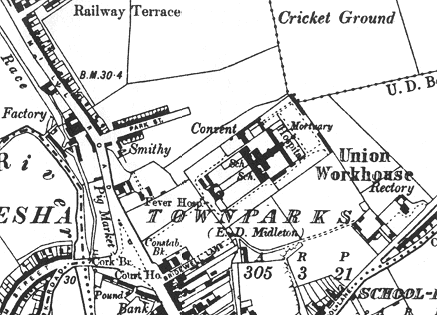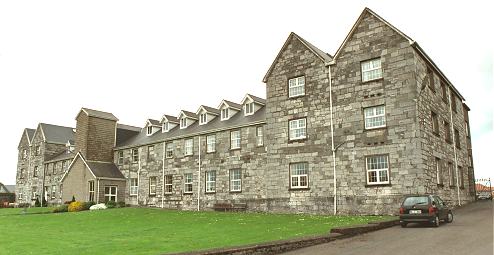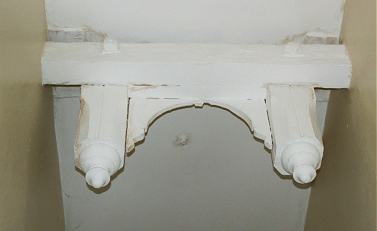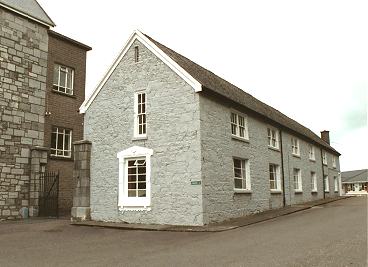Midleton, Co. Cork
Midleton Poor Law Union was formally declared on the 16th February 1839 and covered an area of 227 square miles. Its operation was overseen by an elected Board of Guardians, 32 in number, representing its 21 electoral divisions as listed below (figures in brackets indicate numbers of Guardians if more than one):
Co. Cork: Aghada (2), Ardagh, Ballyoutragh, Ballyspillane, Carrigtoohill, Clonmult, Clonpriest, Cloyne (3), Dungourney, Garryvoe, Dungan, Ightermurrogh, Imogiely, Killeagh, Kilmacdonough, Kilmahon, Lisgood, Midleton (4), Templenecarriga, Youghal (6).
The Board also included 10 ex-officio Guardians, making a total of 42. The Guardians met each week at 11am on Saturday.
The population falling within the Union at the 1831 census had been 73,878 with divisions ranging in size from Ballyspillane (population 1,100) to Youghal (11,327).
The new Union workhouse was erected in 1840-41 on a seven-acre site, the gift of Viscount Midleton, at the north of Midleton. Designed by the Poor Law Commissioners' architect George Wilkinson, the building was based on one of his standard plans to accommodate 800 inmates. Its construction cost £6,853 plus £1,347 for fittings etc. The workhouse was declared fit for the reception of paupers on 15th June 1841, and received its first admissions on the 21st August. The site location and layout are shown on the 1902 OS map below.

Midleton workhouse site, 1902.
The buildings followed Wilkinson's typical layout. An entrance and administrative block, now replaced, stood at the west. It contained a porter's room and waiting room at the centre with the Guardians' board room on the first floor above.
The main accommodation block had the Master's quarters at the centre, with male and female wings to each side. From the 1902 map, it appears that children's schoolrooms were located at each side of the block.

Midleton main accommodation block from the south, 2002
© Peter Higginbotham.
At the rear, a range of single-storey utility rooms such as bakehouse and washhouse connected through to the infirmary and idiots' wards via a central spine containing the chapel and dining-hall.

Midleton rear of accommodation block, dining hall and chapel from the north-east, 2002
© Peter Higginbotham.
The inmates' day was governed by the sounding of the workhouse bell which was located on the roof of the central spine. It was rung from via a rope which descended via a guide to the passageway below.

Midleton bell-rope guide, 2002
© Peter Higginbotham.
During the famine in the mid-1840s, an extra wing was built and stables appropriated to accommodate 200 extra inmates. The new wing is probably the two-storey block which runs along the southern side of the workhouse.

Midleton new wing of c.1847 from the south-west, 2002
© Peter Higginbotham.
In April 1870, the workhouse Medical Officer, Benjamin Johnston, described the successful operation of a Turkish bath in the workhouse.
The nearby Fermoy and Lismore unions also installed Turkish baths, as did the Cork and Limerick District Lunatic Asylums.
In 1937, the original entrance block was replaced by the present entrance buildings, originally known as the Cottage Hospital. Inmates at this time were still identified with the "Union grey" material used for their clothing.
Nursing care at Midleton developed with the arrival of the Sisters of Mercy. The Sisters continued to run the hospital until 1994 when a lay matron was appointed by the Health Board.

Midleton present site entrance from the west, 2002
© Peter Higginbotham.
The site is now (2002) the home of Our Lady of Lourdes Community Hospital which provides care for the elderly.
Records
Note: many repositories impose a closure period of up to 100 years for records identifying individuals. Before travelling a long distance, always check that the records you want to consult will be available.
- Cork City and County Archives, 33a Great William O'Brien Street, Blackpool, Cork. Holdings include: Board of Guardian Minute Books (1845-1924); Resolution Books (1896-1922); Day Books (1906-20); Indoor Relief Registers (1841-1923); Admission and Discharge Book (1925); Indoor Relief List (1917-19); Record of Births (1844-1930).
Bibliography
Links
- None.
Unless otherwise indicated, this page () is copyright Peter Higginbotham. Contents may not be reproduced without permission.


